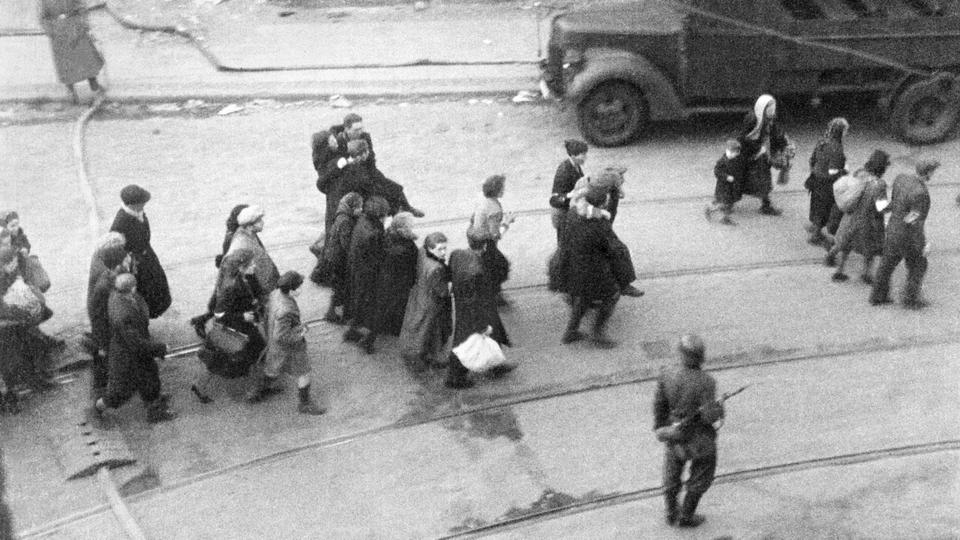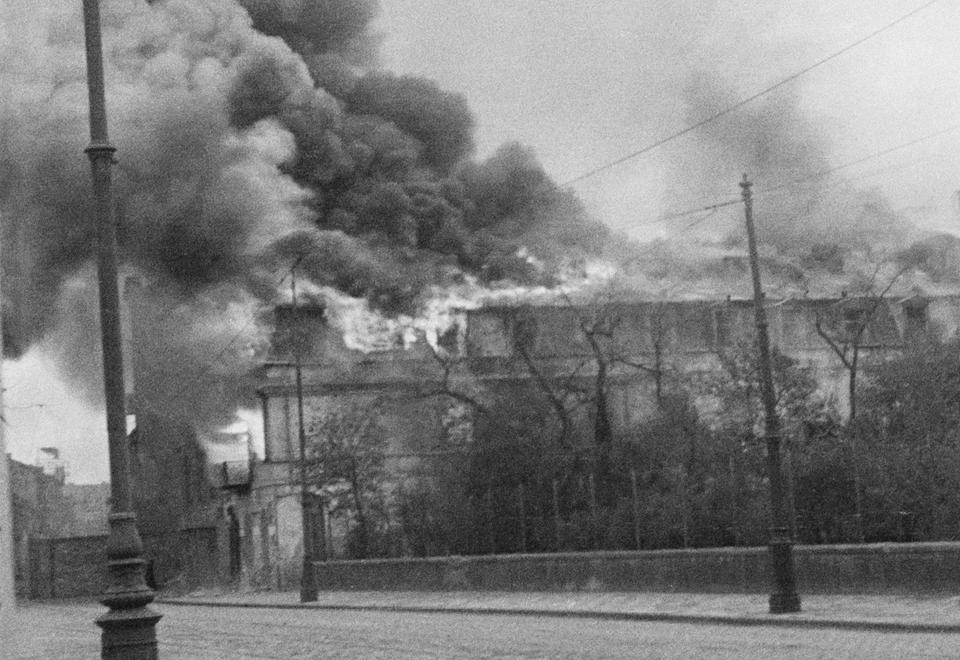[ad_1]
Pictures to be exhibited on the POLIN museum have been taken by a Polish firefighter because the Nazi Germans have been brutally crushing the rebellion of 1943.

(AP)
Warsaw’s Jewish historical past museum has unveiled a bunch of images taken in secret through the Warsaw Ghetto Rebellion of 1943, a few of which have by no means been seen earlier than, that have been lately found in a household assortment.
The POLIN Museum of the Historical past of Polish Jews mentioned on Wednesday that the invention of negatives with some 20 never-seen photographs was an necessary event.
The pictures have been taken contained in the Warsaw Ghetto by a Polish firefighter, Zbigniew Leszek Grzywaczewski, because the Nazi Germans have been brutally crushing the rebellion of 1943.
Because the Germans burned down the ghetto, they referred to as in Polish firefighters to maintain the flames from engulfing close by buildings exterior the ghetto.
The museum’s historians mentioned that the worth of Grzywaczewski’s footage lies of their being the one recognized photographs from the ghetto rebellion that weren’t taken by the German forces, and which subsequently weren’t shot with the intention of serving Nazi propaganda.
Grzywaczewski, then a 23-year-old whose members of the family have been risking their lives to save lots of Jews, took his digicam into the ghetto and secretly photographed Jews being led to Umschlagplatz, the holding space the place the occupying German forces held them earlier than deportation to the Treblinka dying camp.
The photographs additionally present burning buildings.
READ MORE:
Survivor calls on Germany to fight hate on Holocaust Remembrance Day

(AP)
Emotional discovery
Grzywaczwski’s son, Maciej Grzywaczewski, lately discovered negatives with the photographs within the assortment of his father, who died in 1993. He mentioned he grew to become very emotional when he discovered them.
A few of his father’s different photographs, together with pictures capturing the Jews being deported, are held by the US Holocaust Memorial Museum in Washington.
POLIN says the invention provides extra footage to the deportation sequence.
Moreover, those in Washington are prints which have been cropped, with the newly found negatives providing extra particulars.
Among the pictures are blurred or not framed effectively, indicating that Grzywaczewski, who was an avid photographer, was taking them surreptitiously.
The newly found photographs can be included in an exhibition on the POLIN museum referred to as “Round Us a Sea of Fireplace,” opening on April 18, the eve of the eightieth anniversary of the Warsaw Ghetto Rebellion’s outbreak.
It started on April 19, 1943, after German troops and police entered the ghetto to deport its surviving inhabitants. Some 750 younger Jewish fighters armed with simply pistols and different gentle arms attacked a German drive greater than thrice bigger. Of their final testaments, they mentioned they knew they have been doomed however wished to die at a time and place of their very own selecting.
In the long run, the fighters held out practically a month, longer than some German-invaded nations did.
It was the most important rebellion by Jews throughout World Struggle II and the primary important city revolt towards the German occupation in Europe.
By Could 16, 1943, the Germans had crushed the rebellion and deported surviving ghetto residents to focus and dying camps.
READ MORE:
Germany puts 100-year-old on trial for Nazi crimes
Supply: AP
[ad_2]
Source link


